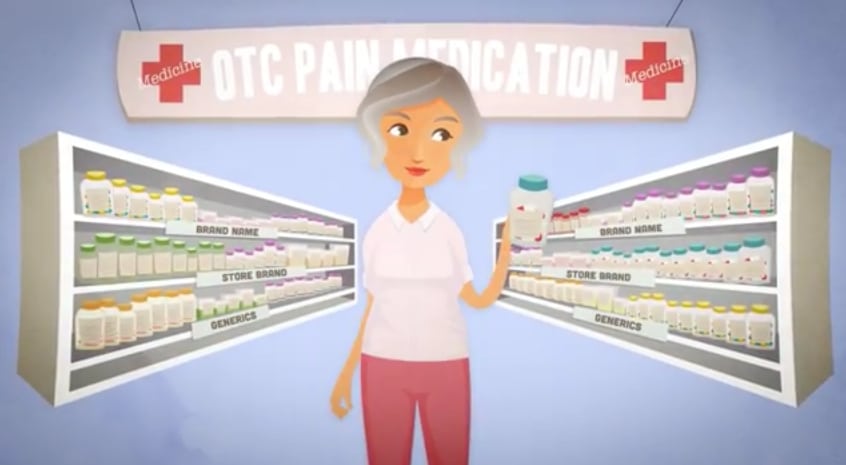Around 100 million Americans live with persistent pain, more Americans than are affected by diabetes, heart disease, and cancer combined.
Press Kit for OTC Pain Medication Safe Use and Storage Films
Published March 2, 2016

March 2nd, 2016 – This press kit introduces you to the press campaign about the Alliance for Aging Research’s new short films on OTC pain medication safety. For the press release, please go here.
About the Films
These two animated “pocket films” focus on educating consumers about the importance of proper usage and storage of OTC pain medications.
Topics covered in the films include:
- An overview of the role of OTC acetaminophen and NSAID pain medications
- A walk through of the Drug Facts Label found on most OTC medications
- Tips on how and when to take (and not take) these medications
- Guidance on safely storing OTC pain medications to keep them out of the hands of young children and those who might want to misuse them
OTC Pain Medication: What You Need to Know
This short film serves as a guide to help people chose the medication that’s right for them.
Safely Taking and Storing OTC Pain Medication
This film offers tips on where to store medications, how to keep them Up and Away and Out of Sight of young children, and how to prevent misuse.
About OTC Pain Medications
- Tens of millions of Americans take over-the-counter pain medications every year to treat everything from headaches to the minor pain of arthritis.
- The two main types of OTC pain medications are acetaminophen and nonsteroidal anti-inflammatory drugs (NSAIDS). They are found in hundreds of medications.
- Acetaminophen is the most common active drug ingredient in the U.S. and is found in fever reducers, sleep aids, and cough and cold medicines.
- OTC NSAIDs are also very common and include aspirin, ibuprofen, and naproxen sodium.
- Some OTC pain medications even combine acetaminophen and NSAIDs.
Why Is Safe Use and Storage of OTCs Important?
OTC pain medications are effective and generally safe if taken as directed. However, just because they’re available over-the-counter does not mean they come without risks. They should never be taken casually because they can cause serious injury and even death if not taken properly.
Acetaminophen can cause liver damage and other side effects if taken incorrectly. NSAIDs can cause stomach bleeding, and the chance is higher if not taken according to the label. Also, the U.S. Food and Drug Administration (FDA) recently warned that the use of all NSAIDs, with the exception of aspirin, can put someone at an increased risk for heart attack, stroke, and heart failure, any of which can lead to death.
These medications also present a serious hazard to young children who accidently get into them or who are given too much medication. Every year, more than 60,000 children age 5 or younger are treated in an emergency room for accidental medication poisoning.
Facts and Figures
- NSAIDs are found in more than 900 OTC and prescription medications.
- Acetaminophen is found in more than 500 OTC and prescription medications.
- 50 million Americans use acetaminophen containing medications.
- Daily limits for each medication: 4,000 mg per day for acetaminophen, and 1,200 mg per day for ibuprofen, 4,000 mg per day for aspirin, and 660 mg per day for naproxen sodium.
Additional Resources
- Statistics on persistent pain from the Alliance’s Silver Book site
- An Alliance conducted survey on pain and the use of acetaminophen from 2015
- Information about safe medication storage, including an infographic and webcast
Contact Info
For more information about this campaign, please contact Noel Lloyd via email or 202.370.7852.
Contact Info
For more information about this campaign, please contact Noel Lloyd via email or 202.370.7852.
